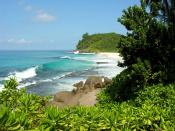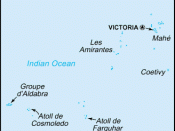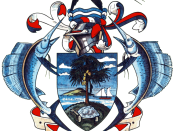History of the Culture.
Although known and visited by traders from the Persian Gulf area and East Africa in earlier times, the Seychelles Archipelago first appeared on European maps at the beginning of the 16th century after Portuguese explorers sighted the islands during voyages to India. Recorded landings did not occur until 1609, when members of the British East India Company spent several days on Mahé and other nearby islands. A French expedition from Mauritius reached the islands in 1742, and during a second expedition in 1756 the French made a formal claim to islands. The name "Seychelles" honors the French minister of finance under King Louis XV. Settlement began in 1778 under a French military administration but barely survived its first decade.
Uniqueness of the Culture.
There is no indigenous culture in the Seychelles, but aspects of African origin have survived. Seychellois is a blend of Indian, European, Chinese and Arabic.
Most Seychellois are Catholic, but there is a widespread belief in the supernatural and in the old magic of spirits known as Gris.
The Seychellois people are a unique blend of Créole, Indian, Chinese, French and British. They lead a very simple life where tourism is carefully monitored in order to protect the natural charm of the island. The main languages are French, English and Creole. On first meeting, shaking hands is the customary form of greeting. The Seychellois are friendly people who openly invite guests into their homes. The geography of the Seychelles is a wonderful island that is surrounded by other islands. The term is given by the physically description of Archipelago. The political government of the country is a Republic.
Seychelles is constantly hot and humid, with an average annual temperature of 84ðF, and the average sea temperature is the same, seldom dropping below 81ðF.


